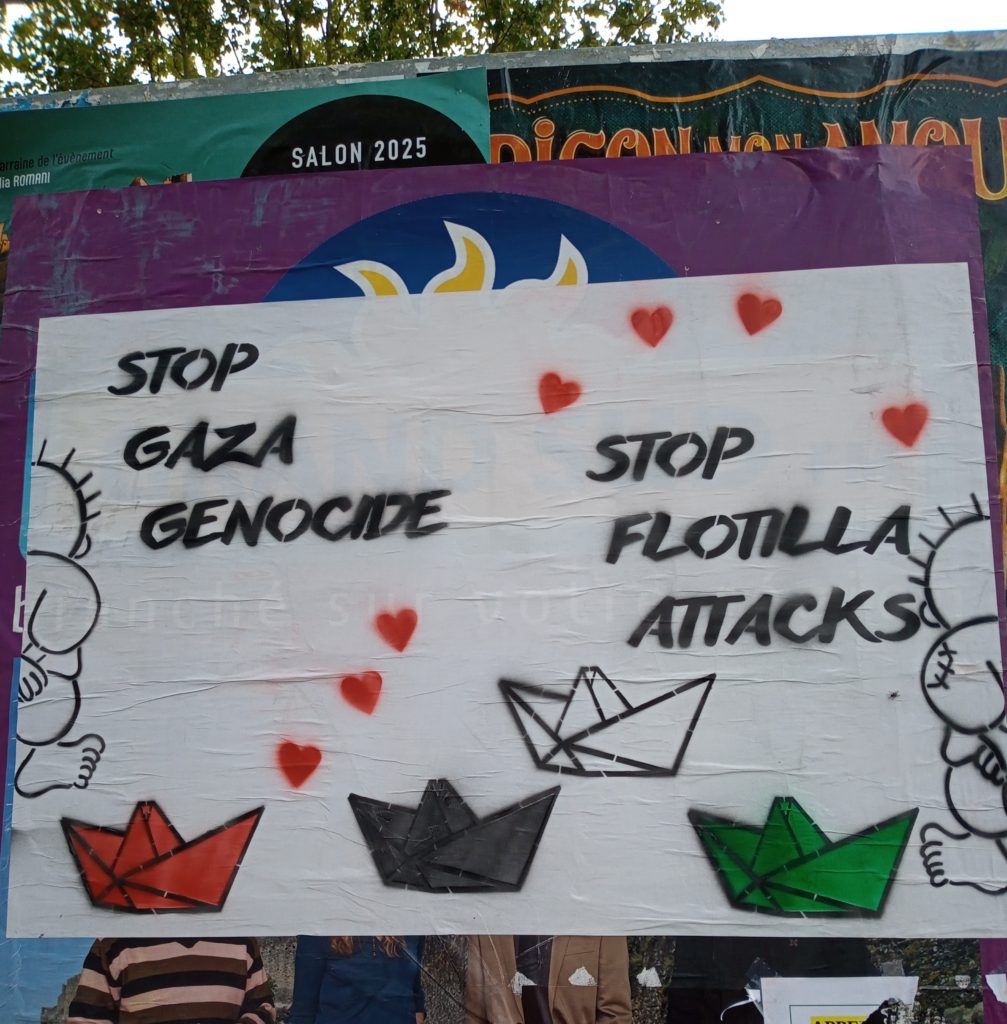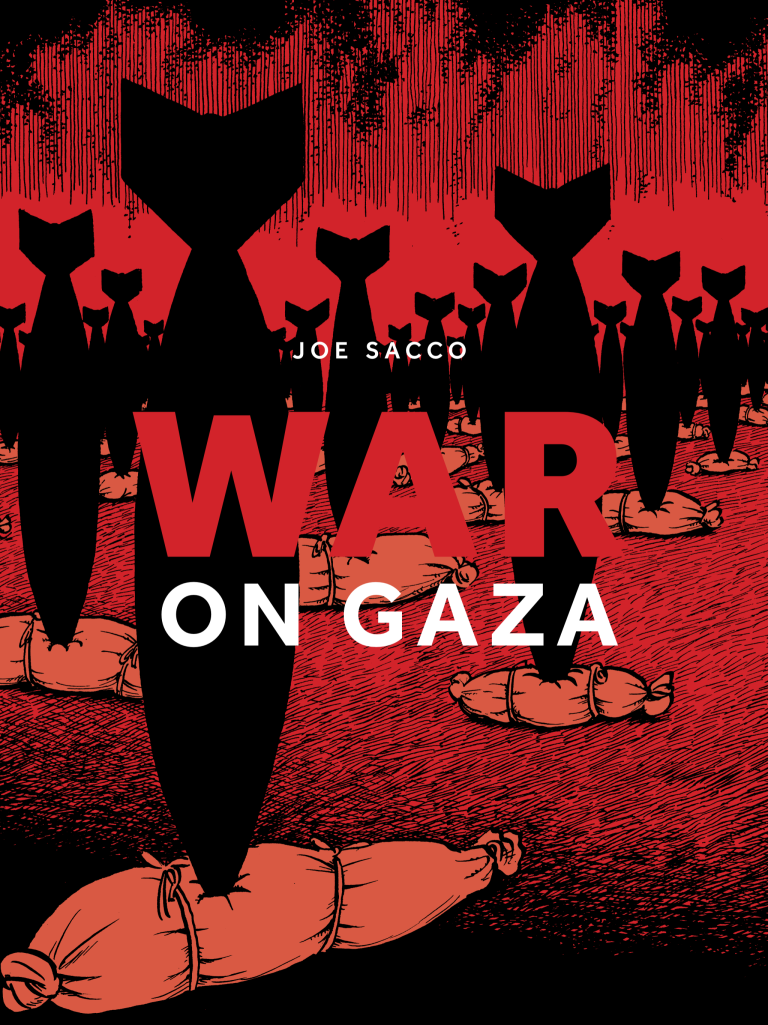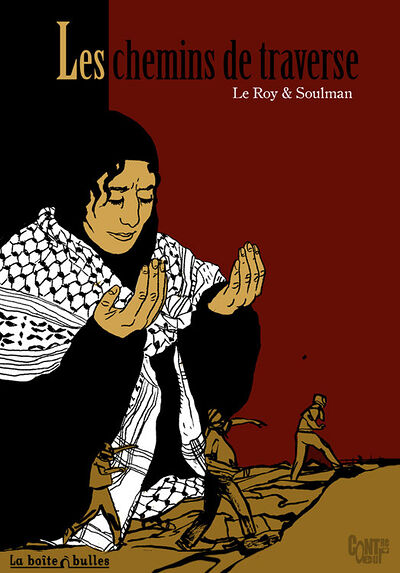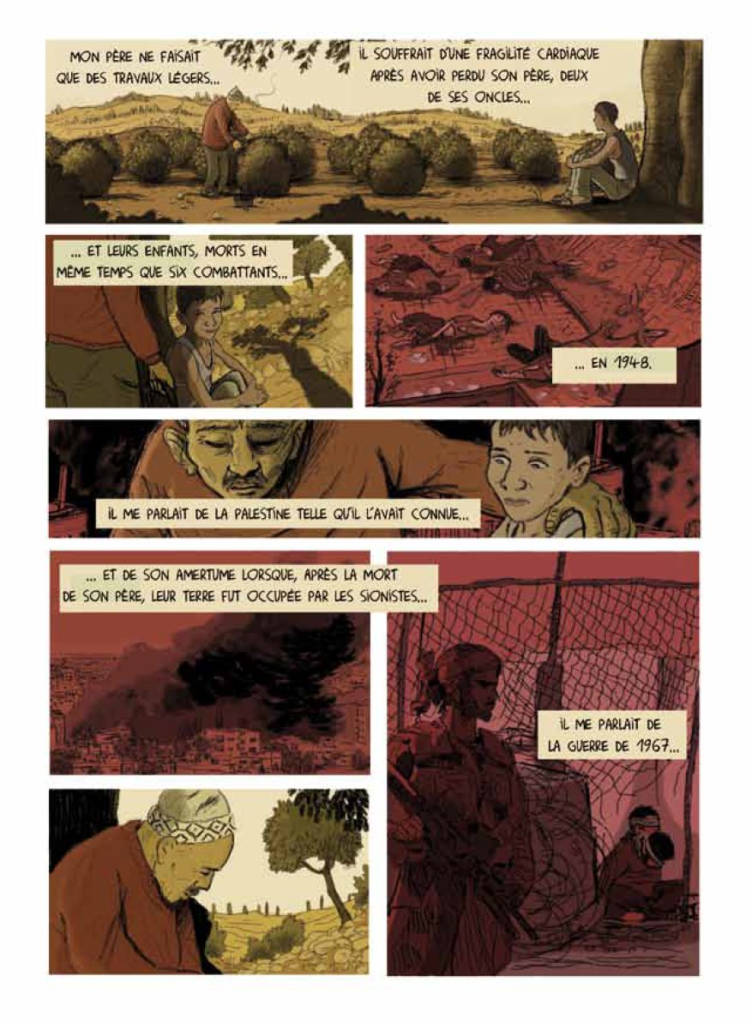
In earlier posts, I have written about the connection of démontage as a metaphysical concept and as an idea with political effects: bande dessinée is political but how it is political is neither necessary at a general level nor for individual works. This does not mean that the works cannot be political.
Despite being the preponderant art of démontage – where no narrative is free from disassembly – bande dessinée is political, as it has been for one of the most shocking political and moral events of the last seventy years: the attempt to eliminate Palestine, through banishment, dispossession, land theft, massacres, persecution, ethnic cleansing and the recent genocide of Palestinians in Gaza (with the killing and maiming of 64 000 Palestinian children and the starving of many more).
My use of bande dessinée should be seen in a wide context here, including cartoons and political posters, with their long history that includes figures a such as Daumier and Gillray. Within this tradition, among the many contemporary cartoonists taking a stand on the Palestinian genocide, the combination of spare style and stark message of First Dog on the Moon stands out, as it does in Gaza-based artist’s work Safaa Odah in Safaa and the Tent (available here).
The complicity of Western governments and their preparedness to barter principled and effective opposition to genocide for cosy relations with the Israeli lobby, military industrial complex and the Trump administration, as well as oppression of demonstrators for reactionary and self-serving internal political reasons, came out in this Private Eye cartoon and the subsequent arrest of a demonstrator drawing attention to it:

In cartoons and bandes dessinées, there has been a longstanding commitment to describe and comment on events in Palestine, Israel and the Middle East more widely. I have written before on Joe Sacco’s Palestine and Footnotes in Gaza; they are both indispensable testimonies to what has been and is being destroyed and how. More recently he has been writing The War on Gaza – the ‘on’ is an essential correction of the mendacious idea of war ‘in’ Gaza – in order to comment on and take a stand for those suffering genocide at the hands of overwhelming and utterly cynical power perpetrated by Israel and its allies.

Sacco is not alone in this historical and political work of testimony and resistance. Here is a list of French language or translated books on Palestine (from many perspectives). Here is another more recent example of cartoonists taking a stand against genocide in Gaza: ‘the important thing is to remember’ will be a central task against the propaganda and renewal of persecution that will resume so long as the same forces stay in power.
BD can also go beyond testimony and political resistance. Soulman and Le Roy’s Les chemins de traverse searches for peaceful ways forward and advocates co-existence through political encounters between militants on either side of the conflict – along desire lines or short cuts or side roads, chemins de traverse.
Far away from the whitewash and denialism of state level proclamations of peace, these tentative paths forward do not deny the past but try to bring together those injured by it. Soulman and Le Roy bear witness to long years of expropriation, murder, humiliation and violent subjugation, but they aim to find common political structures and acts breaking with the violence while doing justice to those who have suffered from it.

The above image link takes you to the publisher’s site where you can follow the opening pages of the BD (© La Boîte à Bulles 2010) such as the ones tracing the long history of land theft and killings from the story of a single family (1948; 1967; 2003):

The looseness of an art of démontage has made it possible for Soulman and Le Roy to connect rapidly and urgently individual suffering, distant and close dates, and the overall persecution of a people through the enaction of a Zionist ideology by Israel, from 1948 to 2010 when Les chemins de traverse was published. The connections are open and flexible; the BD brings together two different stories and two explanatory texts. Each reader must make singular links and will experience different emotions depending on the chosen paths – desire lines through the book.
This emotional and historical ground also gives us a better understanding of the deep roots of the current (in 2025) relentless destruction of Gaza and its inhabitants. It reminds us that the Palestinian people have been suffering injustices and extreme violence for a very long time, such that the contemporary accusation of genocide should be attached to a much longer timeframe.
BD about the conflict aren’t only about Palestine and Palestinians. There has been terrible suffering and historical wrongs for Palestinians and for Israelis. Les chemins de traverse bears witness for both sides and points to ways to bring them together. Other works report on life in Israel, such as Rutu Modan’s Exit wounds with its detailed and multi-faceted depiction of life in Israel after a bombing, or her Tunnels with its confrontations and connections across groups during an archaeological search.
Démontage cannot make an art more true. It can make it more eloquent. Other types of writing and depicting, such as academic history, the novel, written and photojournalism are required to test the truth of more rapid communication, sensation and thought.
We might disagree with the testimony and solutions proposed in the idea of militant shared desire lines assembling divided communities, in collective actions for peace against deep wounds. With its composition of image and first-person testimony, Les chemins de traverse ensures we can feel, understand and question them.
If we follow Le Roy and Soulman’s suggestions, a way out of this conflict is for the genocide to be forced to stop, for a Palestinian State to be recognised, with highly permeable borders with Israel, and robust rights of free movement, return and freedom from repression for all, rolling back successive waves of ethnic cleansing, such that two states merge into one and many, formed by joint communal action for peace, recognition, reconciliation and the creation of joint futures:
Our Israeli militant group [anarchists against the wall] joined the resistance led by local village committees affected by the wall, to denounce the lie of the Israeli security plan. (Les chemins de traverse, my translation)
